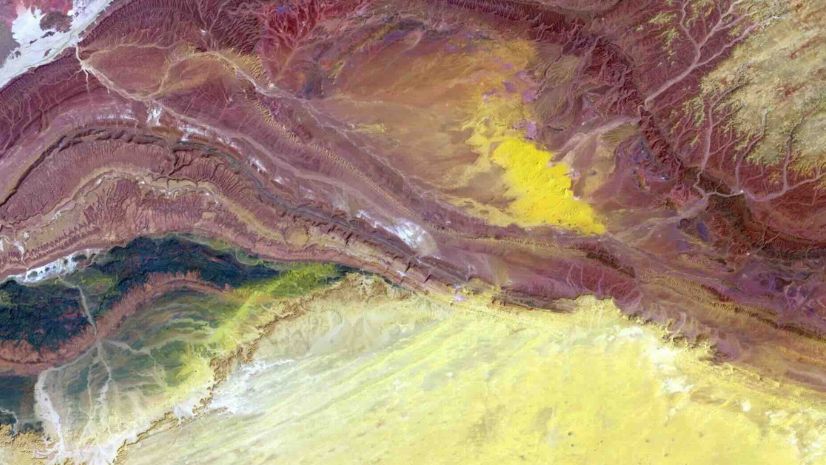I had the pleasure of attending a gathering of electric transmission Geographic Information System (GIS) professionals. There were over 50 attendees representing a dozen operators. This particular group has gathered regularly for several years. What was apparent was the urgency to use GIS more in their companies.
Why?
Things are changing faster than ever. According to the US Bureau of Labor Statistics, more than “10% of highly skilled employees working in infrastructure will retire each year for the next decade.” So there will be fewer employees working at utilities. In addition, the US Department of Energy studies suggests the United States needs to expand its transmission system by 60% by 2030 and possibly triple it by 2050. Climate change has not been kind to utilities. In March of 2023, 11 tornadoes struck Alabama in 3 days, directly impacting utilities. Wildfires have ravaged power lines in the west.

For some, electric transmission systems are just higher and bigger power lines. That’s not true. The technology and complication of designing, building, and operating a transmission system require special skills and knowledge of the transmission business and the underlying physics that drives the grid.
GIS Fuels Innovation
GIS is a powerful technology that has three elements.
- Records Management – the GIS holds critical data about the assets of the transmission system. The records include the location and data about towers, lines, telecommunication systems, land information, real-time weather, and the equipment that makes the grid one of the most reliable systems (and complex) ever invented. Visualizing the grid on a digital map brings records management to life.
- Analysis and Insight – the GIS allows users to visualize the assets and their relationship to the community and provide analytics about when things may go wrong or where the system vulnerabilities might lie. In addition, given that the system must grow, GIS helps planners determine the best place to put transmission equipment.
- Broad Engagement – GIS is like its first cousin, social media, in that it provides communication from the field forces to the decision-makers and other stakeholders in seconds, using one of the world’s oldest communication forms – maps.
Transmission Operators Shared Innovations
Over two days, participants shared many innovations.
Remember the adage – If a tree falls in the forest, and there’s no one around to hear it, does it make a sound? Carrying that metaphor to transmission technology, when a tree falls in the forest and knocks down a transmission line, how do the operators know where the problem is? The old way is for a crew to start at the substation and travel the line until they see the damage. Or the utility can send up a helicopter and patrol the line. But, given that some transmission lines are many miles long, that would take a while. In the meantime, customers could be without power. So instead, one transmission operator uses its GIS to calculate the precise location of the failure by capturing the data from its control computer, then performing an analysis of the distance along the transmission line. They can then use the GIS to route the repair crews to the location and determine the exact access within the right-of-way closest to the problem. And if there are crews nearby, they also know this.
Another participant told a story of how they integrated their GIS with their project management software and scheduling systems, providing a spatial reference to construction projects. They also provide a real-time project progress update in a GIS dashboard.
Another participant used GIS to integrate weather patterns to provide real-time transmission line ratings. The old way was to rate lines on the worst-case temperature situations.
Managing vegetation along a transmission corridor is one of the transmission business’s most costly and critical activities. Some operators shared how they leveraged the GIS to optimize vegetation management, considering vegetation growth, rainfall patterns, species, and location.
GIS Dashboards Drive the Three Cs
GIS fuels innovation by enriching the three Cs of communication, coordination, and collaboration. For example, several operators used GIS in the field on tablets linked to ArcGIS Dashboards to further the 3 Cs. As a result, executives, dispatchers, supervisors, administrators, and engineers had a solid handle to answer a transmission employee’s toughest question: “What’s going on right now?”
Several participants spoke about integrating imagery captured by satellite and drones for data collection and then delivering that data to maintenance and construction staff for analysis and visualization using GIS dashboards. Drone usage is an area of growth for electric transmission operators. Drones can capture data much closer to equipment than a person on the ground or an aircraft flying above the transmission lines.
Several participants shared their stories of struggling with land management and how GIS has helped organize the patchwork quilt of easements, licenses, and leases along their transmission corridors.
Other topics included fiber optics management, imagery management, and the ability for anyone to create their own GIS maps. Finally, Esri presented a detailed presentation on how the participants can fully leverage ArcGIS Utility Network and how they can leverage the Common Information Model (CIM) for integration with other corporate systems.
The group will continue to meet and perhaps expand to include more participants from around the US. In the meantime, this highly motivated group continues to impress their management with their passion for how GIS fuels innovation.
Express your views on how GIS fuels innovation for transmission.

